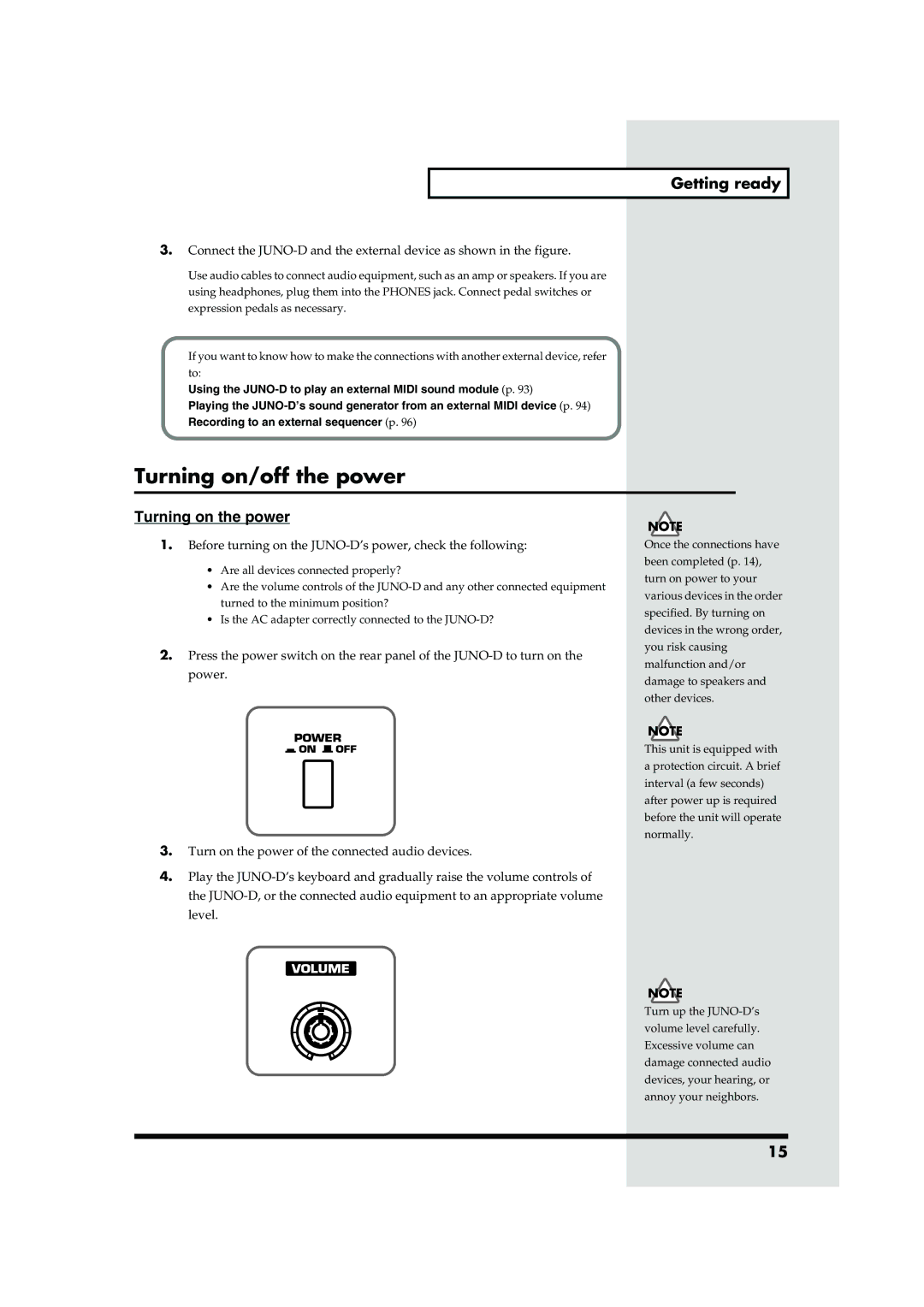
Getting ready
3.Connect the
Use audio cables to connect audio equipment, such as an amp or speakers. If you are using headphones, plug them into the PHONES jack. Connect pedal switches or expression pedals as necessary.
If you want to know how to make the connections with another external device, refer to:
Using the
Playing the
Recording to an external sequencer (p. 96)
Turning on/off the power
Turning on the power
1.Before turning on the JUNO-D’s power, check the following:
•Are all devices connected properly?
•Are the volume controls of the
•Is the AC adapter correctly connected to the
941, 942
2.Press the power switch on the rear panel of the
fig.q01-02
3.Turn on the power of the connected audio devices.
4.Play the
fig.q01-03
Once the connections have been completed (p. 14), turn on power to your various devices in the order specified. By turning on devices in the wrong order, you risk causing malfunction and/or damage to speakers and other devices.
This unit is equipped with a protection circuit. A brief interval (a few seconds) after power up is required before the unit will operate normally.
Turn up the
15
